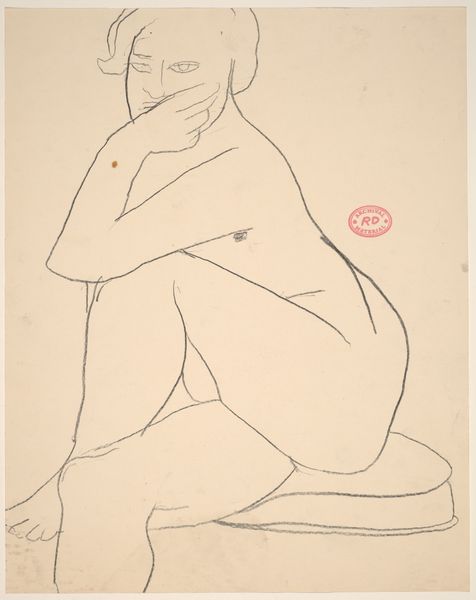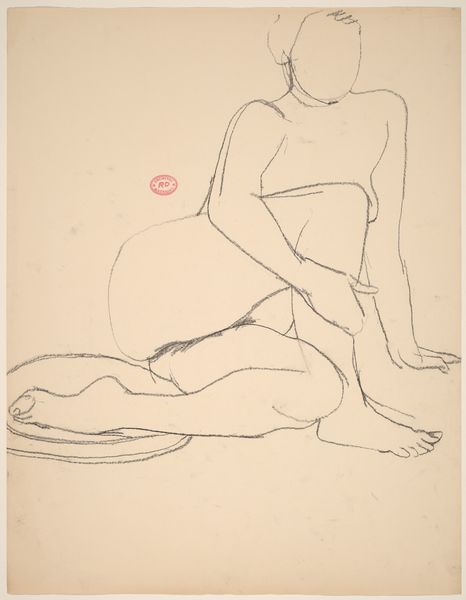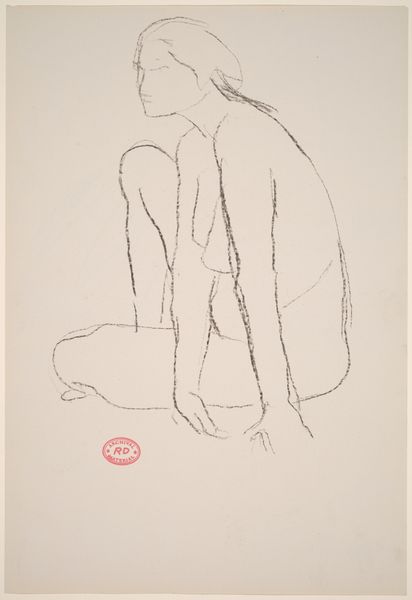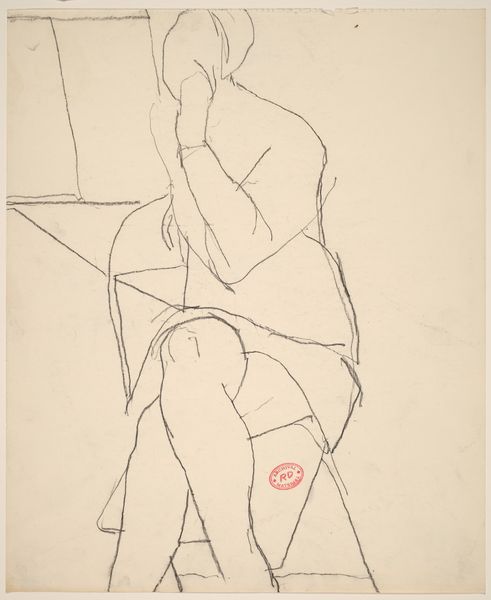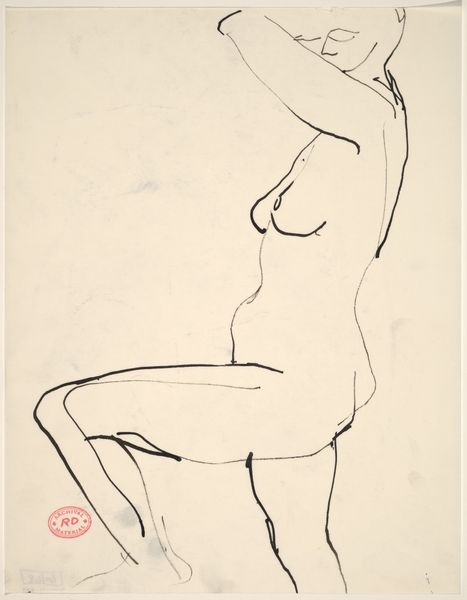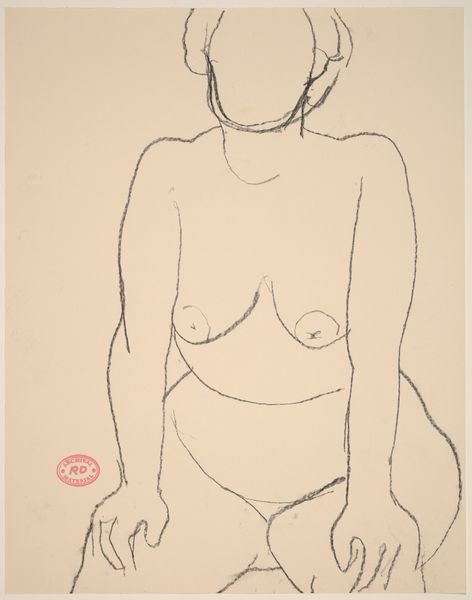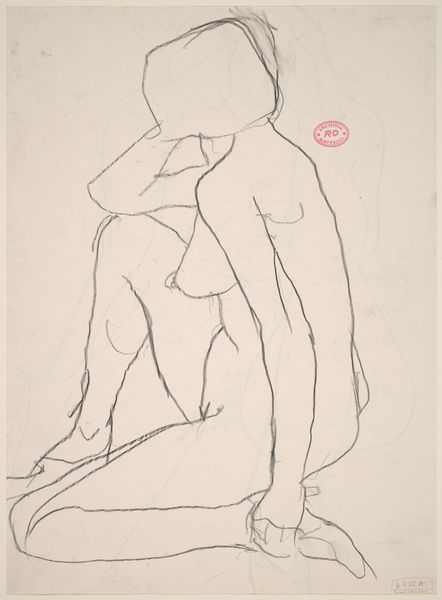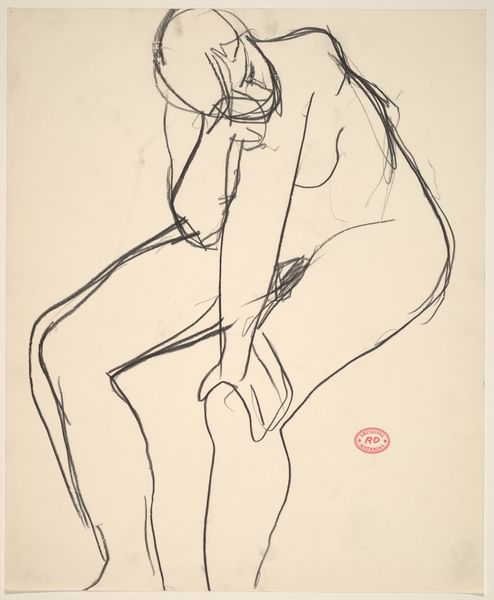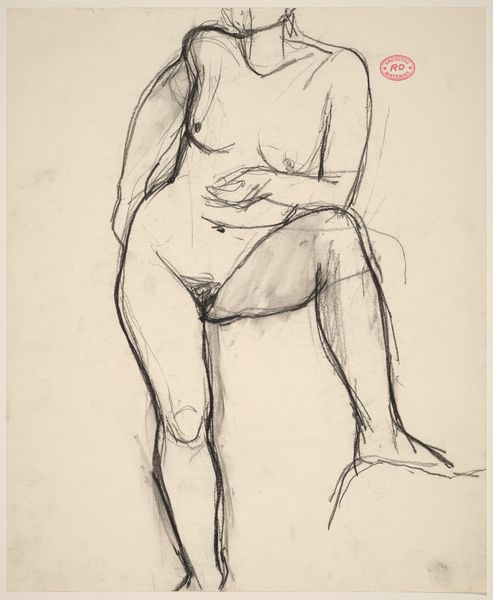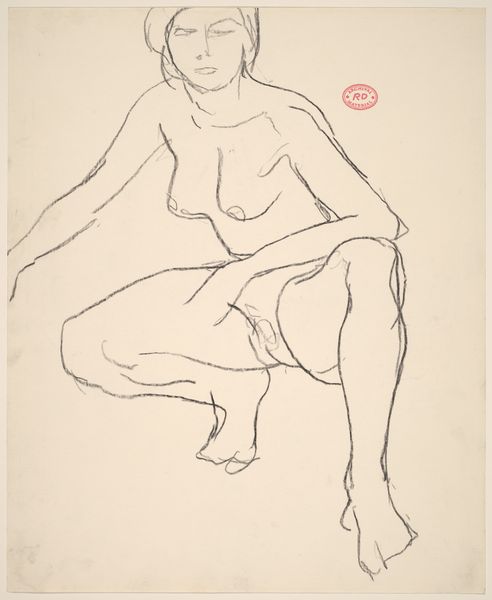![Untitled [female nude stepping up and resting on right leg] by Richard Diebenkorn](/_next/image?url=https%3A%2F%2Fd2w8kbdekdi1gv.cloudfront.net%2FeyJidWNrZXQiOiAiYXJ0ZXJhLWltYWdlcy1idWNrZXQiLCAia2V5IjogImFydHdvcmtzLzJmNTZmNWVkLWM4N2ItNDI0MC05ZmQ2LWJlODU5MTlkYTkzOS8yZjU2ZjVlZC1jODdiLTQyNDAtOWZkNi1iZTg1OTE5ZGE5MzlfZnVsbC5qcGciLCAiZWRpdHMiOiB7InJlc2l6ZSI6IHsid2lkdGgiOiAxOTIwLCAiaGVpZ2h0IjogMTkyMCwgImZpdCI6ICJpbnNpZGUifX19&w=3840&q=75)
Untitled [female nude stepping up and resting on right leg] 1955 - 1967
0:00
0:00
drawing, pencil
#
portrait
#
abstract-expressionism
#
drawing
#
pencil sketch
#
figuration
#
bay-area-figurative-movement
#
pencil drawing
#
pencil
#
portrait drawing
#
nude
Dimensions: overall: 36.5 x 28.9 cm (14 3/8 x 11 3/8 in.)
Copyright: National Gallery of Art: CC0 1.0
Editor: Here we have Richard Diebenkorn's "Untitled [female nude stepping up and resting on right leg]," a pencil drawing created sometime between 1955 and 1967. I find its lines so minimal yet the pose conveys a palpable weight and sense of introspection. What do you see in this piece? Curator: The beauty of this drawing lies in its formal elements. Note the economy of line. Diebenkorn captures the figure's weight distribution through a delicate scaffolding of marks. The linear quality allows the eye to traverse the form, understanding its construction rather than its surface. Observe how the internal lines—those that define the inner leg, for example—function almost as a pentimento, revealing the artist’s process of searching for form. Editor: So, it's less about the "what" and more about the "how" it's drawn? The visible corrections, almost like a roadmap of the artist's decisions? Curator: Precisely. The composition, reduced to its essentials, focuses our attention on the abstract relationship between line, form, and the implied volume of the figure. Consider the negative space as well; how does it activate the form? Where do the lines suggest volume, and where do they flatten the picture plane? Editor: I see it now. The starkness throws into sharp relief his masterful skill at modelling form with so few marks. Curator: Exactly. By reducing the figure to its structural essence, Diebenkorn transcends mere representation and engages with fundamental questions of form. Editor: I never thought I would be this enthralled by an incomplete sketch. Curator: These perceived 'imperfections' highlight the intention and are central to the aesthetic effect. It moves beyond photorealism toward pure formalism. We come away having appreciated not what the drawing represents, but what it is in and of itself.
Comments
No comments
Be the first to comment and join the conversation on the ultimate creative platform.
